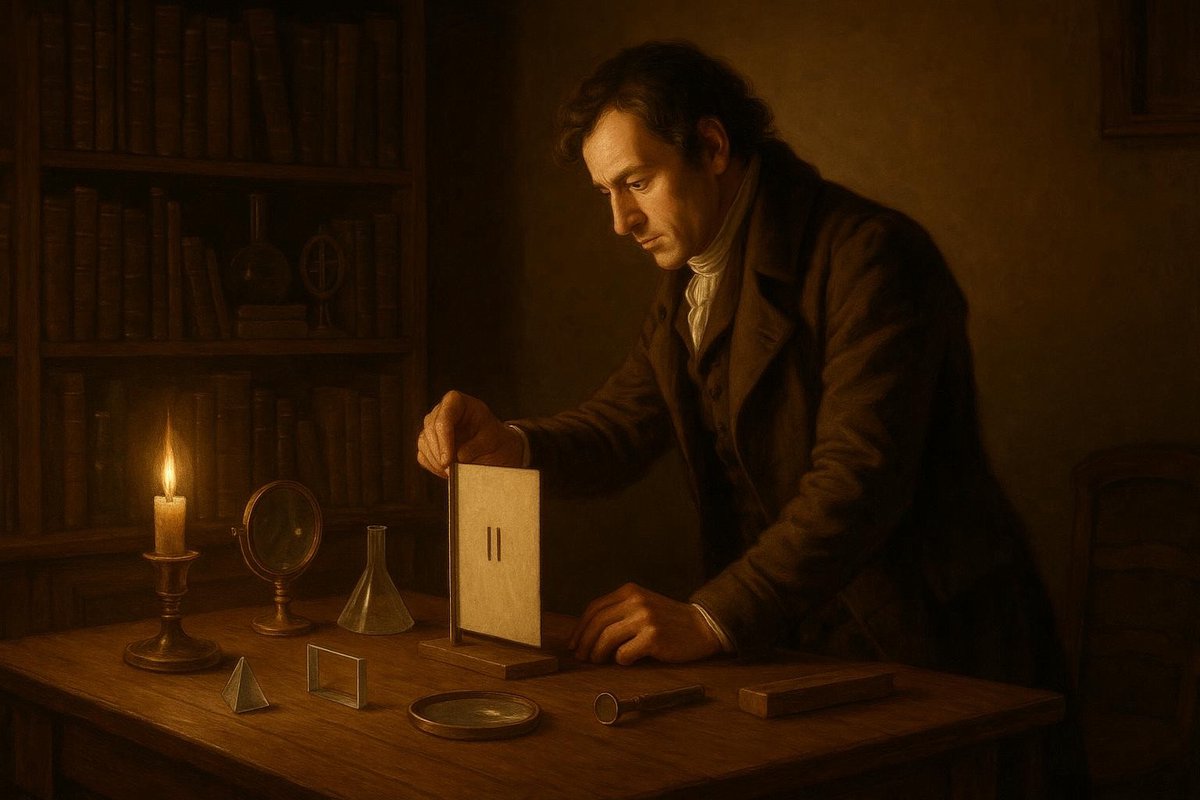
Why does light sometimes act like a wave and other times like a particle? This question puzzled scientists for centuries until a simple yet profound experiment illuminated the path to modern physics. The double-slit experiment, first conducted by Thomas Young, challenged the very foundations of classical physics and nudged open the door to the enigmatic world of quantum mechanics.
Hypothesis & Context
In the early 1800s, the nature of light was a topic of heated debate. Was it a wave or a particle? Isaac Newton’s particle theory held sway for much of the 18th century. However, certain phenomena, like diffraction and interference, seemed to defy his explanation. Enter Thomas Young, a British polymath with a knack for experimentation. He hypothesized that light could exhibit wave-like behavior.
- Newton’s corpuscular theory of light predominated.
- Interference patterns in water suggested a wave-like nature.
- Young sought to challenge and expand upon existing theories.
Young’s experiment was poised to unravel these mysteries. Could something as simple as light passing through slits provide clarity? As time went on, his ideas garnered both skepticism and intrigue. The scientific community was on the cusp of a revolution, and Young’s humble setup would soon become legendary.
Setup & Method
Young’s experimental setup was deceptively simple. He directed light through two closely spaced slits and projected the result onto a screen. What sounds mundane was, in fact, revolutionary in its simplicity and implications.
- A single light source was directed at a barrier with two slits.
- The light passing through the slits projected onto a screen.
- Young observed an unexpected pattern of light and dark fringes.
This setup demonstrated interference patterns, akin to ripples from two stones dropped in a pond. Young reasoned that only a wave could create such interference. Remarkably, this contradicted Newtonian physics, stirring both excitement and controversy. The elegance of Young’s procedure lay in its ability to visualize the invisible, rendering the abstract tangible.
Results & Reactions
The results were nothing short of groundbreaking. On the screen appeared a pattern of alternating light and dark bands — a clear sign of interference. This was the wave nature of light made visible.
- The interference pattern indicated wave-like behavior.
- The results contradicted the particle model’s predictions.
- The scientific community was initially skeptical of these findings.
Young’s experimental results sparked debate and discussion in scientific circles. Was light truly a wave? Could there be a dual nature? As the results circulated, they slowly eroded the dominance of Newton’s particle theory. This experiment was a turning point, shifting paradigms and inviting more inquiries into the nature of light and matter.
Implications
The implications of Young’s work were profound and far-reaching. His experiment laid the groundwork for quantum mechanics, a theory that would redefine physics in the 20th century.
- The dual nature of light inspired future quantum studies.
- Young’s findings paved the way for the concept of wave-particle duality.
- Quantum mechanics emerged as a result of these new insights.
Young’s experiment transcended its humble beginnings, influencing major developments in physics. It questioned the core of classical certainty and opened dialogues that continue in modern quantum research. This was more than a discovery; it was a shift in understanding reality itself.
In conclusion, the double-slit experiment was a milestone in scientific history. It challenged entrenched ideas and introduced a new way of thinking about light and matter. Young’s elegant experiment remains a cornerstone of physics, a reminder of science’s potential to transform our worldviews.
Fuel Someone Else’s Curiosity
The story of the double-slit experiment is not just a lesson in physics; it’s a testament to curiosity and perseverance. Share this fascinating narrative with others and spark a conversation. Who knows what new insights will emerge from exploring the unknown?

Leave a Reply